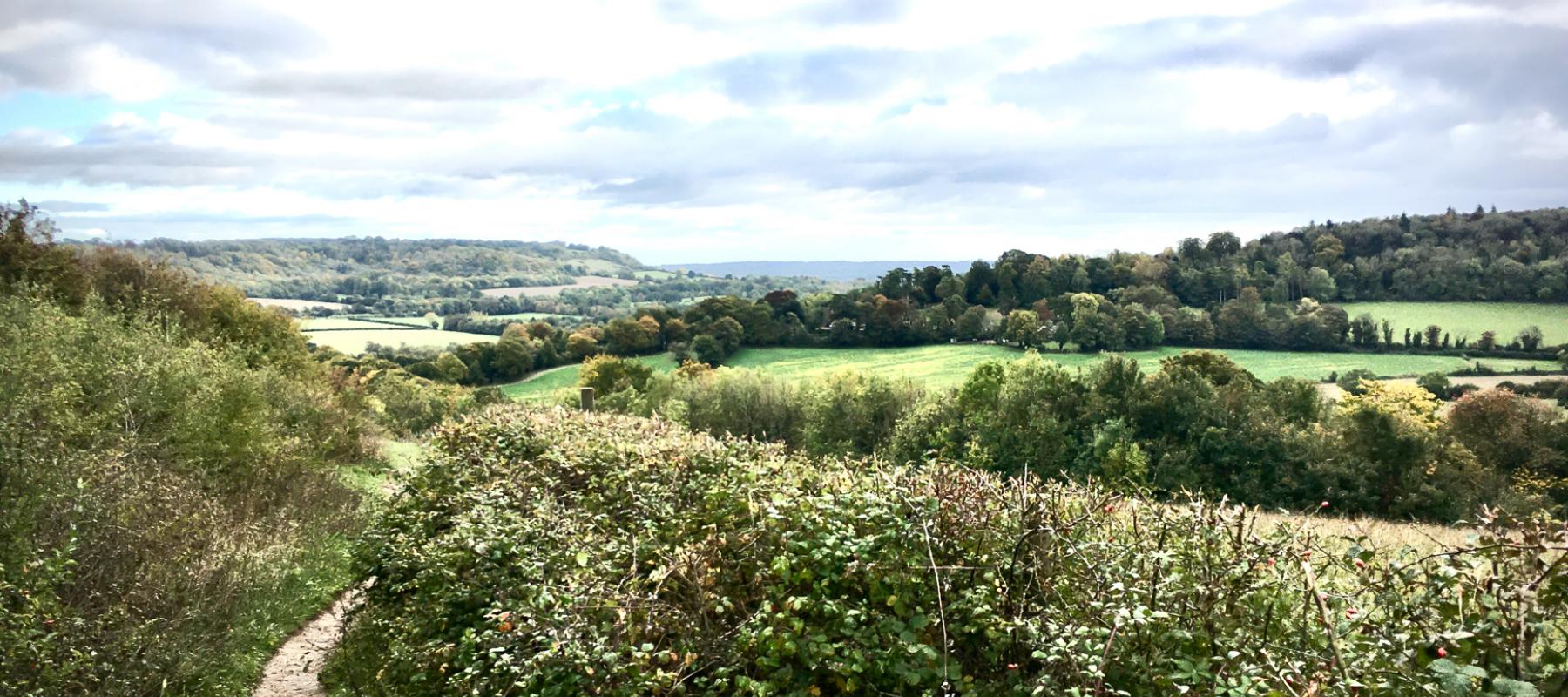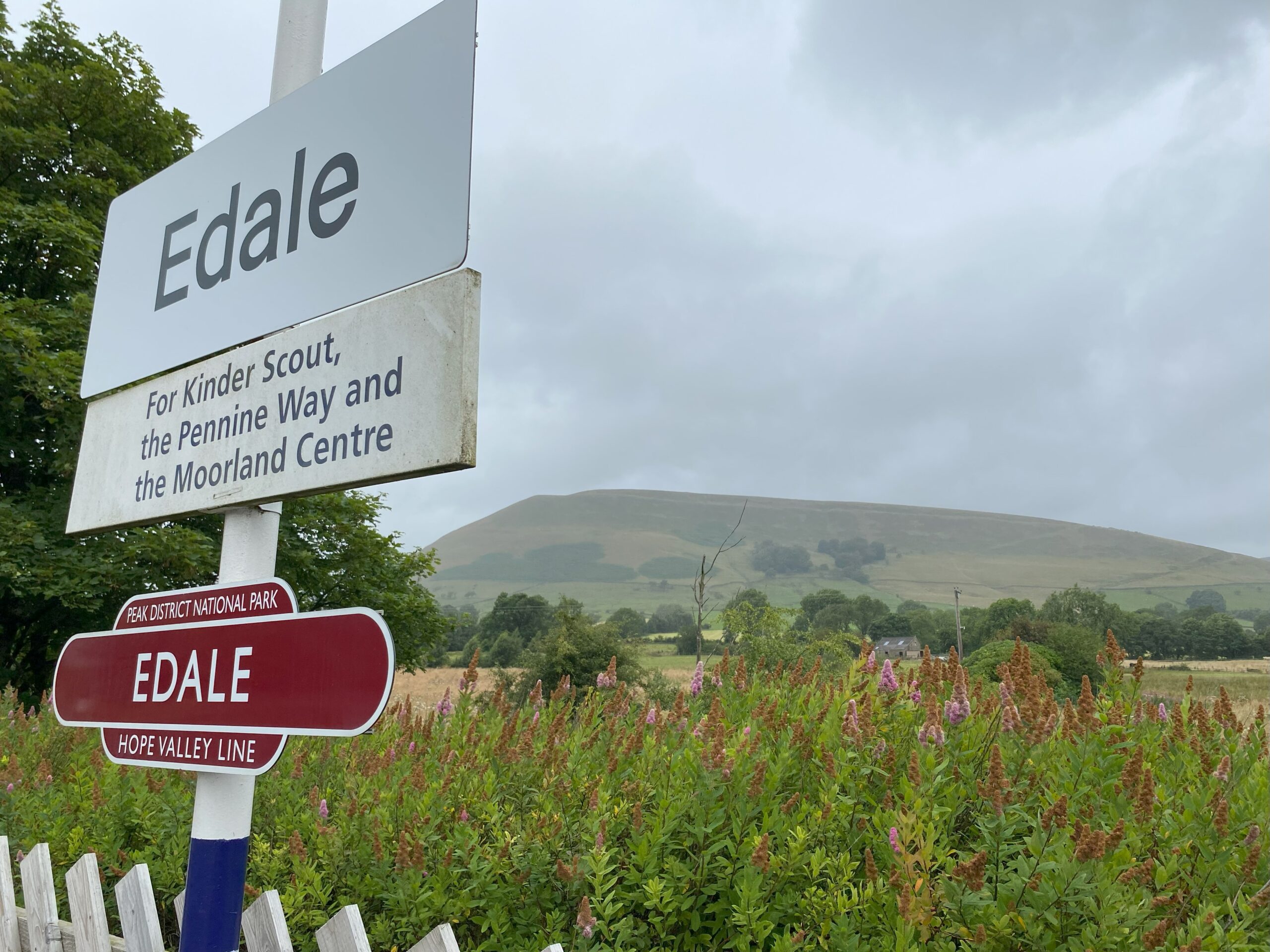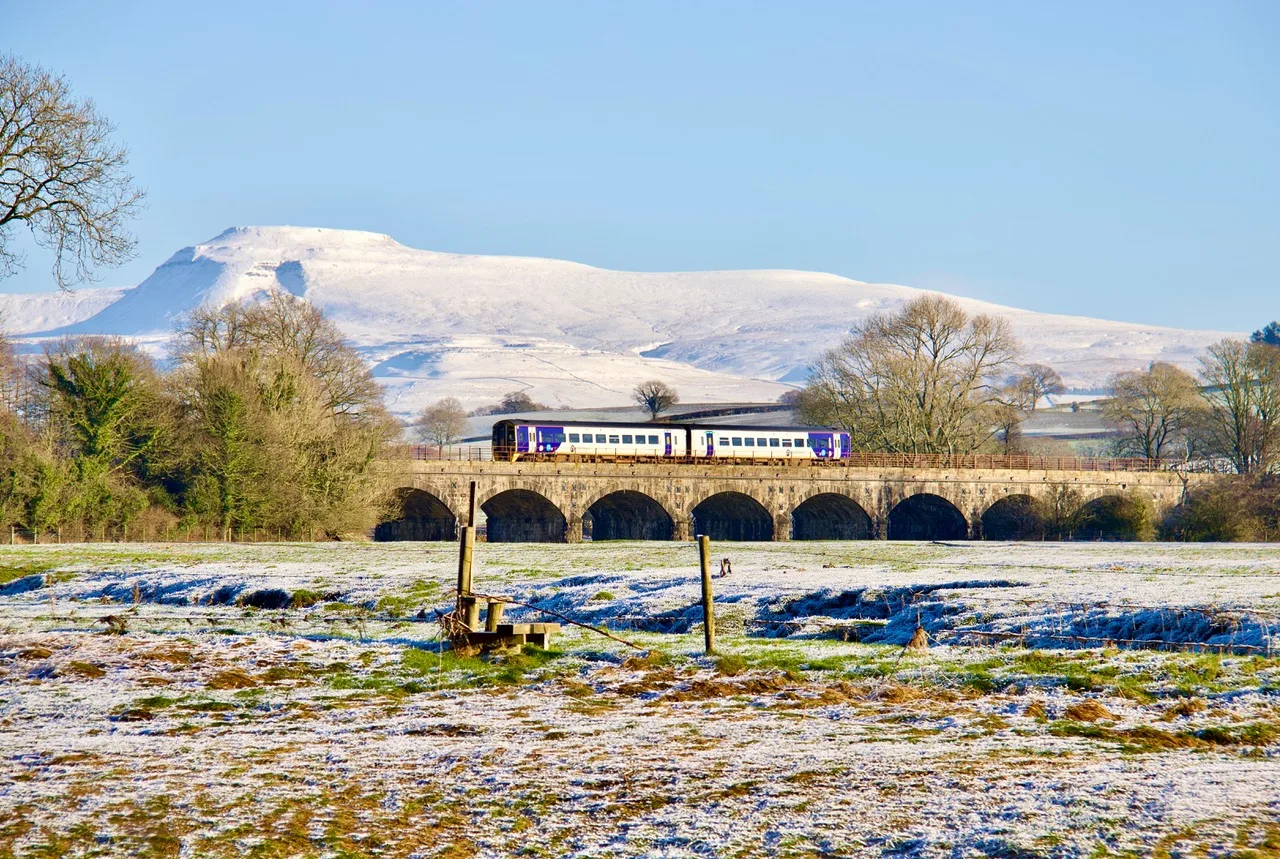From Hops to Lavender on foot
The Darent Valley was described by artist Samuel Palmer as an ‘earthly paradise’. But it is also home to numerous farms making a living from fertile alluvial soil, with wheat, barley, hops, lavender, apples and grapes growing in abundance.
This walk was devised by local farmer William Alexander, owner of Castle Farm and of the glorious lavender fields which surround it. Listen to William’s stories as he guides you through the landscape between Shoreham and Eynsford; find out how the landscape fed a nation during World War Two; where the silk for the Queen’s coronation robe was made; and what makes this part of the world akin to Provence every July.
The route starts at Shoreham station and explores this picturesque village, with an ancient church, characterful medieval houses, peaceful riverside settings, and stunning views from above a memorial chalk cross carved in the hill.
Take the path down the hill and turn left to follow the route of the river through barley fields, past hop gardens (which used to be abundant in this area) and finally the extraordinary lavender fields.
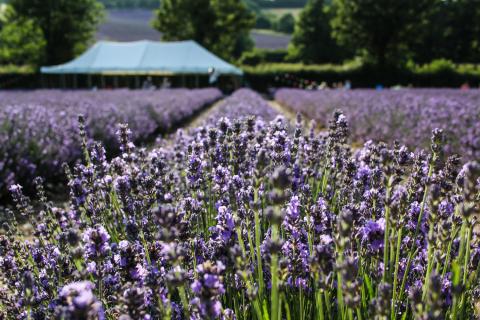
Lavender Fields. Photo by Sarah Newman.
It’s possible to leave the path to visit the charming Hop Shop to try lavender ice cream if you have time, or press on to the Lullingstone Visitor Centre for homemade cake and more.
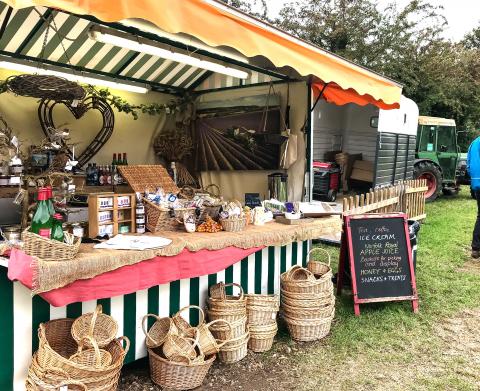
Castle Farm Hop Shop. Photo by Sarah Newman.
Another diversion, if you are walking at the weekend during the summer, might include a visit to the historic Lullingstone Castle and its unique World Garden, conceived of by Tom Hart Dyke (resident Lord) when he was held hostage some years ago in a South American rainforest!
As if that weren’t enough, further along the valley lies the truly ancient Lullingstone Roman Villa, managed by English Heritage. In Roman times the river Darent was much deeper and wider and navigable by river barge. The wheat grown by the Romans in the area found its way to London (or Londinium as it was…). The remains of what was once an elegant home are available to view under cover – it’s amazing to think this house was one of many such villas lining the valley at the time.
The walk passes under the elegant Eynsford viaduct, built for the railway in 1862. Arriving in Eynsford village, you will cross an old humpback bridge with distinctive pedestrian escape niches. The grassy riverbanks are often busy with visitors paddling in the clear chalk stream in the summer months.
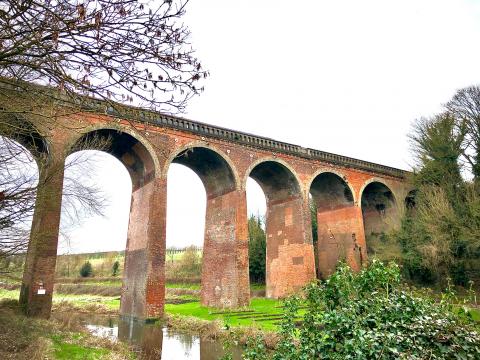
View of Eynsford Viaduct. Photo by Sarah Newman.
You have the option of returning to the station at this point (or retiring to one of the pubs or cafes…) but one more feature remains if you have time – the dramatic 12th century Eynsford Castle ruins, a flint structure thought to have had a timber watchtower, also managed by English Heritage.
With such a diverse and varied range of landscapes and heritage venues to visit, do allow at least three hours for this walk, perhaps more if you plan to stop and refresh yourself. Of course coming by train is the best option (local roads are narrow and access tricky), and the valley’s stations are well-connected by footpaths.
